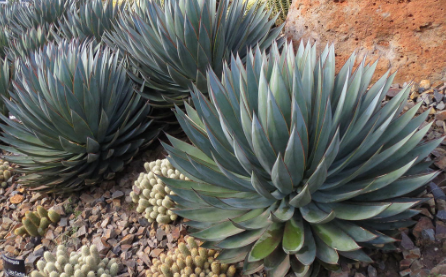
Agave Blue Glow
Agave 'Blue Glow' is a beautiful, slow-growing agave hybrid that is popular among succulent enthusiasts for its striking appearance. This plant is a cross between Agave ocahui and Agave attenuata and is known for its stunning blue-green leaves edged with a thin, bright red margin.
Here's what you need to know about the care and characteristics of Agave 'Blue Glow':
-
Appearance: Agave 'Blue Glow' has narrow, lance-shaped leaves that are blue-green in color. The red margin is typically edged with a fine line of yellow, and the tips of the leaves come to a sharp point.
-
Size: When fully grown, this agave can reach a size of about 2 feet tall and 2-3 feet wide.
-
Lighting: Agave 'Blue Glow' prefers full sun to partial shade. In particularly hot climates, some afternoon shade may be beneficial to prevent sunburn.
-
Watering: Like most agaves, 'Blue Glow' is drought-tolerant. You should let the soil dry out between waterings. Overwatering can lead to root rot.
-
Soil: A well-draining soil mix, like a cactus or succulent mix, is essential. If planting in the ground, ensure the location has good drainage.
-
Temperature: This agave can tolerate a bit of frost, but it's best to protect it from temperatures below 25°F (-4°C).
-
Growth: Agaves are monocarpic, meaning they flower once in their lifetime and then die. However, Agave 'Blue Glow' takes many years before it reaches the flowering stage. Once it does flower, it will produce a tall spike with yellow-green flowers, after which the plant will die. Pups or offsets might appear at the base of the plant during its life, which can be separated and planted as new individuals.
-
Pests: Agave 'Blue Glow' can be susceptible to the agave snout weevil. The larvae of this pest can burrow into the heart of the plant, causing significant damage. Regular inspection and prompt treatment can help prevent serious infestations.
-
Landscape Uses: Due to its compact size and striking appearance, Agave 'Blue Glow' is often used as a focal point in xeriscaping, rock gardens, and container gardens.